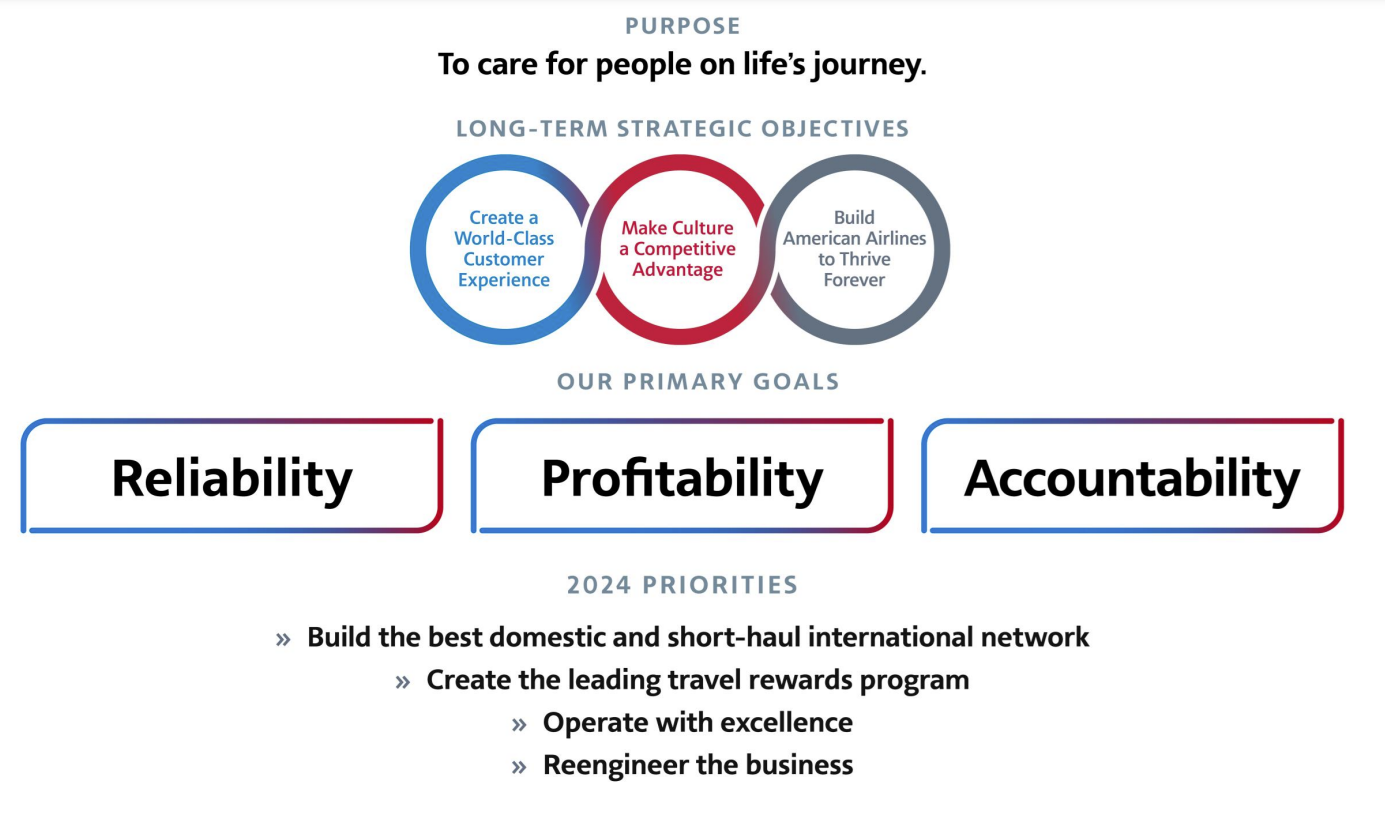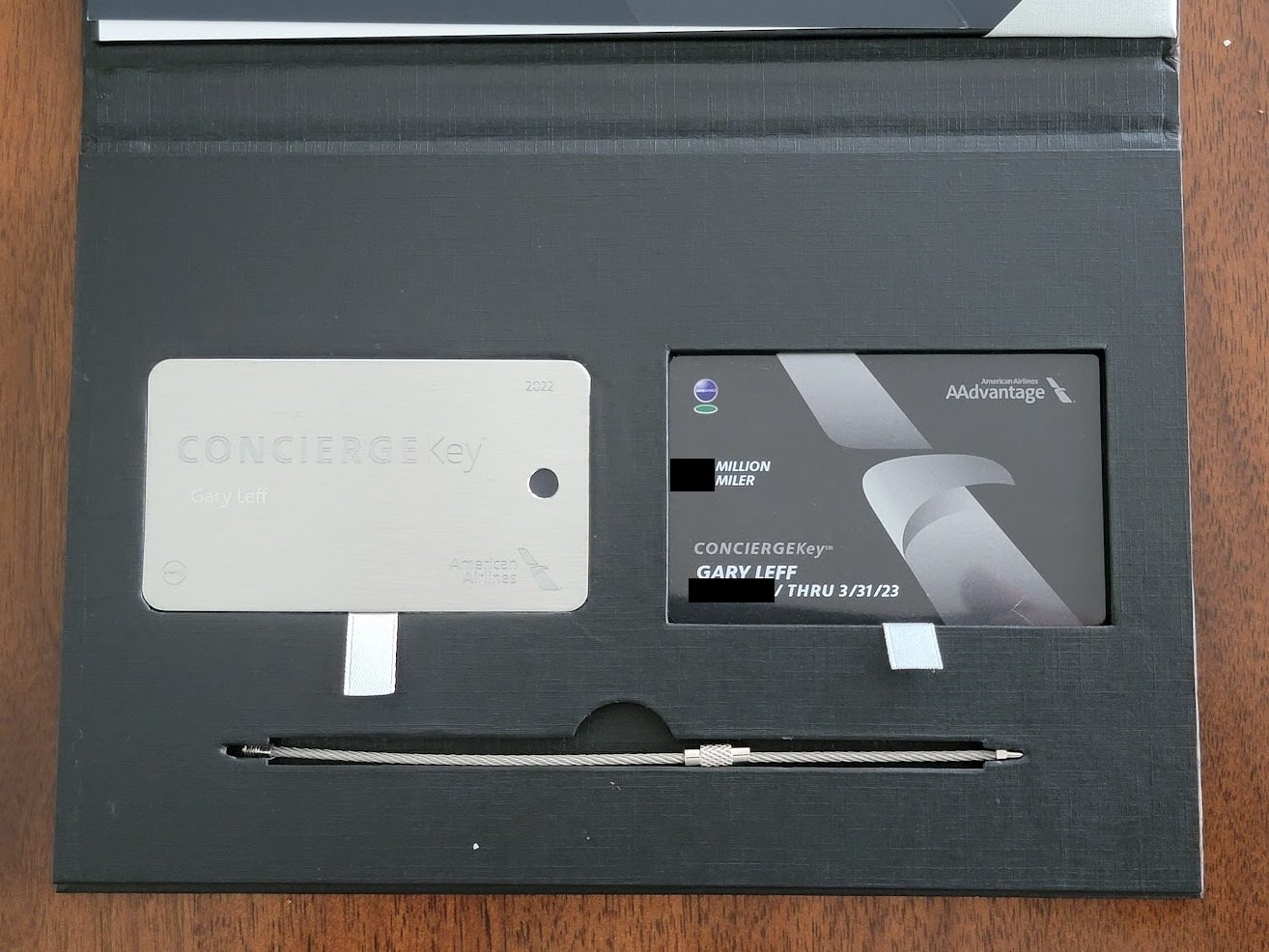American AAdvantage has taken center stage at the airline. It is the driver of their profits, even as they lose money moving passengers on planes. The program makes their CEO’s presentations, and it’s top of mind and top of tongue for Chief Commercial Officer Vasu Raja who emphasizes that life is better as an AAdvantage member.
After the airline’s 2024 earnings call, CEO Robert Isom presented the company’s 2024 priorities to employees. His second priority for the year, as presented in his slide deck? “Create the leading travel rewards program.”

American is the best program for earning status beyond simply flying. Its partner award redemptions are among the best. But there’s one area where American AAdvantage lags behind all of its competitors: rewarding customers with lifetime elite status.

One of the key drivers of loyalty over years – once you’ve locked in a customer, what keeps them going and stretching even when they may be less enthused – is that they’ve gotten close to and need to cross the finish line for lifetime status.
- Delta lets you earn up to lifetime Diamond, now after 3 million miles, and lifetime 360 (equivalent to United Global Services and American Concierge Key) after 5 million.
- United lets you earn lifetime Global Services (after 4 million miles). United gives your partner the same status as you when you’re a lifetime elite. And they’ve gotten really good at celebrating lifetime milestones inflight.
- Alaska Airlines made huge improvements to their lifetime status program last year, offer lifetime elites upgrade priority over those with similar status; extended a lifetime elite member’s status to their partner; and giving lifetime members a head start towards earning higher status each year in the program.

American AAdvantage, on the other hand, hasn’t updated its lifetime status program in 13 years. The status you can earn tops out at lifetime Platinum, their second from the bottom tier. And while status-earning is based on Loyalty Points (miles from most source) lifetime is still based on miles flown.
It’s hard in a way for American because up until 13 years ago, all miles earned counted towards lifetime – all card spend, all initial bonuses even – counted so they have people not just with 3, 4 million miles but with 70 million lifetime miles and more. So what do you do? This is actually easy to solve!
- Take current lifetime miles earning and double the total. Then the counter going forward increments with loyalty points.
- Currently lifetime Gold is 1 million miles and lifetime Platinum 2 million. Those numbers double, but everyone’s accumulated totals double also.
- Then you add Platinum Pro at 6 million; Executive Platinum at 8 million; and Concierge Key at 10 million.

And if the model shows too big of an elite pool, impose a second criteria that you need to have earned a level 10 times before getting that level for life. E.g. 2 million points and 10 years of Gold or higher for lifetime Gold; 4 million points and 10 years of Platinum or higher for lifetime Platinum; 6 million points and 10 years of Platinum Pro or higher for lifetime Platinum Pro; 8 million points and 10 years of Executive Platinum or ConciergeKey for lifetime Executive Platinum.
The addition of lifetime ConciergeKey at 10 million points would drive a lot of loyalty over a long time as well (and shouldn’t be limited to those who were “CKs” for 10 years).
American AAdvantage looked at how to modernize the lifetime status program before the pandemic, but did not act. It’s now a corporate priority. American AAdvantage needs to be the leader, not just competitive, let alone in last place.


Great article and great comments by others that reflect how I also feel. I have been Exec Platinum for several years (4.7 million miles), but each year it (1) becomes more difficult to reach and (2) more incomprehensible how to reach the status! As for how miles relates to the ticket price etc… who knows! It’s like spinning a lottery wheel and seeing what reward/points/miles you get for a trip that may be exactly the same as a few weeks back, but results in completely different points! What is the “point” of sticking with AA?
@Dave Clark: there shouldn’t be any mystery about how to obtain status nor how many miles and LPs a particular flight will earn. You obtain status by hitting the threshold number of LPs.
You earn LPs by flying or spending with a co-branded credit card or a retail partner.
The simplest and most straightforward way to earn status is to charge purchases to a cobranded credit card. You earn one LP per dollar, so if you spend $40,000 you earn Gold, $75,000 gets you Sapphire, $125,000 gets you Platinum Pro (OneWorld Emerald), and $200,000 for Executive Platinum. Some retail partners award more than one mile and LP per dollar, so you could spend less.
The traditional way of earning status is by flying. For all flights booked with an AA, BA, or IB flight number, you earn miles and LPs for the base fare and any carrier-imposed fees (some people call these “carrier overcharges,” which is exactly what they are). A no-status member earns five miles and LPs per dollar, while an Executive Platinum member earns eleven. Other status levels earn in between. There is a new wrinkle that starts this year, which is that if you don’t buy your ticket from AA or a partner airline or an AA-approved travel agency, you won’t earn anything.
For flights with a OneWorld airline flight number other than AA, BA, or IB, you earn by distance and by the fare you purchased. AA has a table on their website for each airline showing how much you earn for each booking inventory.